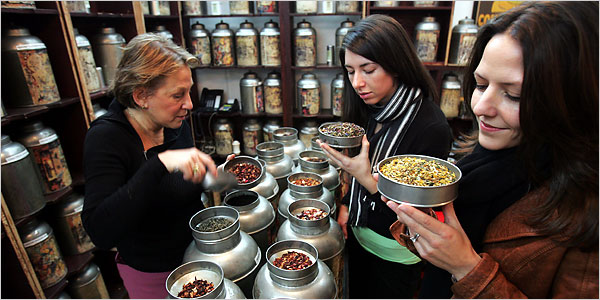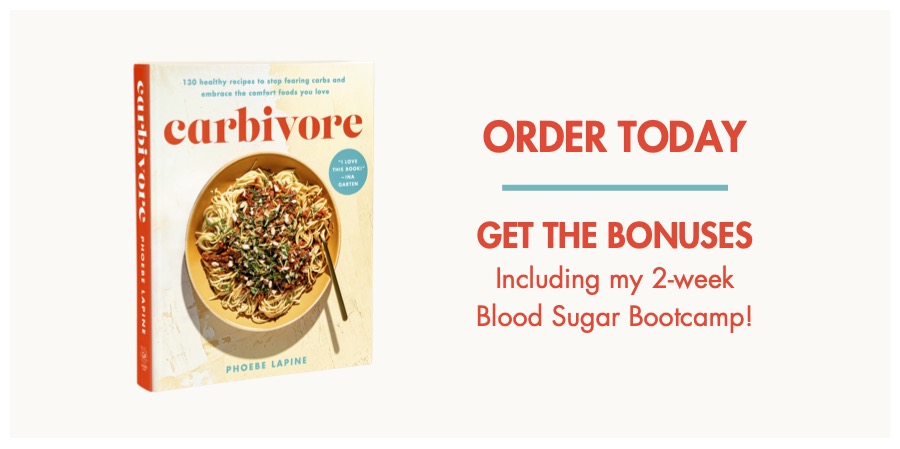Earlier this year, when I did my 30 day detox and went off caffeine, sugar, and alcohol, I became something I never thought I would: a full-time tea drinker.
While red wine and raw chocolate chip cookies quickly became a mainstay in my diet again, coffee was something I was determined to kick to the curb for good. Tea just felt so much better on my system. My stomach no longer cried in protest every morning. And even though I still relied on a bit of green tea to pick me up after I migrated downstairs from my sleeping loft, it wasn’t enough caffeine that my body couldn’t cope without it.
So even though I get weird looks at my local hipster coffee shop (where I am presently sitting and writing this post) when I order a cup of Jasmine Ginger, and sometimes I miss the taste, I’m happy that I made the switch. And now that I have, I’ve been trying to take my tea game to the next level.
To find out what the tea equivalent is of single drips and cold brews, I turned to the woman The Times dubbed as the “Tea Guru of New York,” Miriam Novalle. During last week’s Wellness Wednesday hangout we got to talking about why green tea is every wellness warriors’ go-to, the perfect herbal cure for those winter colds, and how simple rituals around tea can help heal your mind, body, and spirit.
Miriam began her tea business after a successful stint as a nose for a fragrance house and she brings a similarly sensual approach to her appreciation of fine ingredients and the emotional experience that a cup of tea can elicit, as she must have when her pursuits revolved around perfume. To hear her wax poetic about her journey, make sure to check out the video from the last Wellness Wednesday, and read on for other sachets of wisdom on better ways to start bringing tea into your everyday life.
1. Go into your cupboard and throw away anything that’s over a year old.
Just as you wouldn’t want stale bread in your pantry, you should only be storing tea that is fresh enough to actually have a flavor impact on your palette. “It’s important to make sure you’re starting your day with a cupboard that’s holding ingredients that will make a difference in your life,” says Miriam. She recommends that the one-year mark be your benchmark for dried goods and that you get rid of any ice teas that have been lying around your fridge for over 3 days.
2. Start integrating one new tea at a time.
“It’s about the ritual more so than all the different blends,” says Miriam. And that’s why she recommends starting with one flavor at a time if you’re just making the switch from coffee to tea. “You just need to start with one. Drink it in the morning, or whatever time works for you, and then add another that you might like at night.”
3. Understand the difference between black, green and herbal teas.
Tea is over 5000 years old. The art of cultivating, picking, and processing the camellia sinensis bush is steeped in history. This is black and green tea as we know it, while herbal teas are a whole different category.
“All tea comes from the same bush and it all starts green,” says Miriam. It’s the process of fermenting, withering and rolling the tea that differentiates black and green tea. “Green tea is fresher, it’s less processed, less high in caffeine. It’s great for filtering the liver. Great for working on your kidneys. Remember you’re dealing with green. Think of all the things that happen when you’re in the woods with all that pine and greenness around you. Your whole lung structure opens up and you can feel the fresh air around you and feel the elegance of all that chlorophyll that enters into your capillaries. Green tea does exactly that.”
Black teas are withered and rolled to be richer and darker. “A lot of people can’t deal with that tannic quality. Green tea is a lighter, softer, feather like, smoother taste that is really elegant when it’s grown in the right places in Japan.”
4. Buy good quality tea.
Just as people obsess over the merits of coffee beans from Colombia versus Costa Rica, it’s important to know where your tea comes from. Miriam suggests getting to know brands in the same way you would your butcher or fish monger. Go to their websites and “understand their consciousness and their passion and their desire for clarity.” Better yet, find a shop like T Salon and get to know the purveyor personally.
5. Know when to buy organic and avoid GMO’s.
Like many small independent food brands, not all tea companies can make the investment to officially join the organic “club.” Miriam says not to spend too much energy worrying about whether your tea is organic—just make sure you’re buying from a country that has a rich tea culture. “Almost 80 percent of teas are natural already. They’re not going up 14,000 feet to spray a tea plant. The 23 years that I’ve gone to these countries–China, Japan, India, Sri Lanka—they’re not spraying. Argentina? Yes. Indonesia, maybe. I won’t give away countries but they do.”
There are still plenty of tea ingredients that are grown in genetically modified forms, and for herbal teas, you should pay attention to these labels. “Marigold flowers and peppermint are genetically changed for higher yield of planting. You’re warming your body with something artificial.”
6. When something ails you, go with chamomile.
I asked Miriam what she would recommend as a good starter herbal tea to integrate into your healing routine. Chamomile was her first choice. “If you want to bring your vibrational tone in and you want to have a little clarity, and brighten the colors around you, I think I would definitely first start with chamomile.”
7. For immunity and colds, choose ginseng and ginger.
Even though she claims she doesn’t get colds (must be all that tea!), when Miriam is down for the count she reaches for a pot of ginseng and ginger. “I’ll slice it fresh–almost enough to fill the bottom of a big tea pot–and I will drink it all day long. It goes straight to the immune system. It’s not going to completely put you to sleep but it does relax the moment. It definitely takes you into that comfort of sitting back and all of a sudden everything around you gets quiet.”
8. Buy Darjeeling if you want the champagne of tea.
Miriam has been all over the world looking for the best teas, and no place got her more excited than talking about her trips to Darjeeling. If you’re not sure what to buy, you can rest assured that tea from this part of the world will be the best possible quality.
“In Darjeeling, you’re at the base of the Himalayas at 14,000ft. Because it gets cold, the tea bushes go to sleep during the winter. But then they wake up in the spring and the women flush out the first buds in April. They pick all the leaves by hand—it’s mind boggling!
“Each Darjeeling estate (and there are only 87), has a secret formula for how long they dry their leaves for and they keep it under lock and key. The soil is hundreds and hundreds of years old. So you’re looking at a family that has taken over generation after generation. It’s not a hobby to them. In the morning they wake up, they meditate, then they go up into the fields.
“They really have upped the ante of what organic means, what fair trade means–they really make [tea] a very endearing experience and they love being part of it.”
9. Create a ritual and make your morning tea a meditative experience.
When I asked Miriam her one wellness recommendation for my readers she said her key to health is just finding time in the morning to get quiet and listen to your breath. “The Japanese do it by listening to their pot of water boiling. That’s how they do it. They listen to the steam coming out of their kettle and when it gets to that boiling point, they stop their meditation and they make a cup of tea.” I love that starting your meditation practice and finding that quiet can be just as quick and easy as making a pot of tea.


These are great tips, especially with the incoming fall/winter weather!
Thanks, Briana! Yes – I find I’m making MUCH more tea now that it’s starting to get cold.
Do the Japanese boil their water on a slow flame? Because a couple of minutes on high flame seems too short to enter a meditative state. But it’s a really intriguing idea.
you can meditate for as long as you want. the real definition is just finding time to check in with your breath and be quiet. there’s no reason why you can’t do that for 2 minutes – it’s a much more sustainable way to integrate meditation into your busy life.